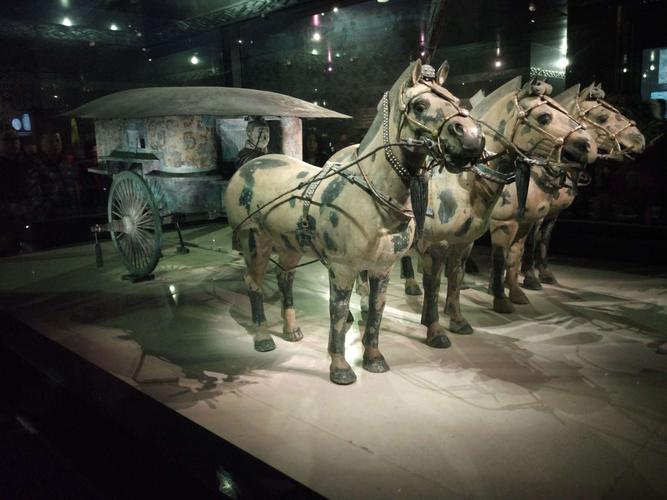
The Terracotta Army: A Legion of Clay
A Silent Army Unearthed
The Terracotta Army, discovered in 1974 by farmers digging a well, is one of the most significant archaeological finds of the 20th century. This vast collection of life-size terracotta figures is buried within the sprawling mausoleum complex of Qin Shi Huang, the first emperor of China (259-210 BCE).
More Than Just Warriors
The figures interred with the emperor were not merely meant to be symbolic representations; they were intended to serve as guardians and attendants in the afterlife, mirroring the grandeur and might of his earthly reign. The army is meticulously arranged in battle formations and comprises a variety of figures, each playing a specific role:
- Warriors: The most numerous figures are the infantrymen, archers, and generals, each distinguished by their unique attire, armor, and hairstyles, reflecting their rank and military specializations.
- Chariots: The army features elaborate chariots drawn by teams of four horses. These chariots, often occupied by a driver and one or two warriors, were symbols of high status and military power.
- Horses: There are two primary types of horses: those harnessed to the chariots and individual cavalry mounts. Each horse is realistically sculpted, showcasing different breeds and postures, some even depicted in mid-gallop.
Estimating the Army's Size
While excavations continue to this day, estimates from 2007 provide a glimpse into the sheer scale of this subterranean army:
- Soldiers: Over 8,000 terracotta soldiers have been unearthed across the three excavated pits.
- Chariots and Horses: Approximately 130 chariots, each with a team of four horses (totaling 520), have been discovered.
- Cavalry Horses: Around 150 horses specifically designed as cavalry mounts are also part of the vast army.
It's important to note that the majority of these figures remain in situ, meaning they are still in their original burial locations. Further excavations and research promise to unveil even more about the Terracotta Army and the reign of Qin Shi Huang.
Q&A
1. What is the purpose of the Terracotta Army?
The Terracotta Army was intended to accompany Qin Shi Huang, the first emperor of China, in the afterlife. The figures were meant to serve as guardians, attendants, and a display of his power in the next world.
2. How many pits contain the Terracotta Army?
Currently, three pits containing the Terracotta Army have been excavated.
3. Why are the figures so significant?
The figures are significant for several reasons. They provide valuable insights into ancient Chinese military tactics, artistry, and the social structure of the Qin dynasty. The detail and craftsmanship of each figure are unparalleled, making the Terracotta Army a unique and invaluable archaeological treasure.